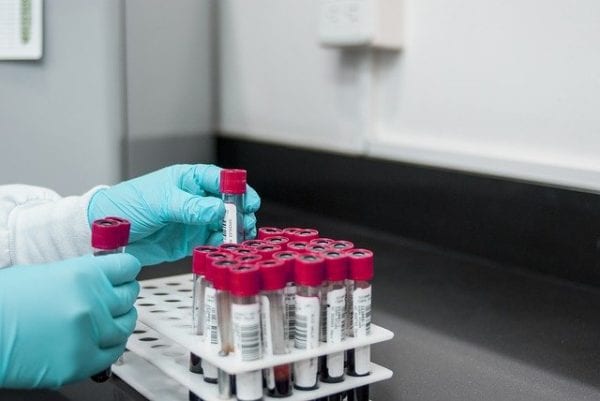Many providers will not encounter patients with HIV very often, but it may become more commonplace now as HIV therapy has improved dramatically as well as life expectancy in patients with the disease. It is important for providers to meet these patients’ HIV-related needs, but also to address any other health conditions or concerns and manage any comorbidities according to guidelines and evidence-based best practices. Lab monitoring in HIV is absolutely essential and we wanted to provide you with some of the most common monitoring parameters.
The most recent HIV treatment guidelines from the Department of Health and Human Services stress the importance of initiating antiretroviral therapy (ART) as soon as possible after diagnosis (ideally the same day), however, some patients may have opted to delay therapy until their viral load is higher. There are a wide variety of drug regimens and combination tablets on the market, which are often prescribed and managed by HIV specialists, but it may be helpful to revisit the DHHS guidelines to better understand your particular patient’s regimen and address any medication issues that may arise.
The following are important labs to monitor in HIV patients on established ART therapy. These should always be checked more frequently if the patient is experiencing symptoms of illness or if their regimen has recently been changed.
Viral Load
When considering lab monitoring in HIV, one of the most important labs to monitor in your patient is viral load, which measures the amount of HIV RNA present in the patient’s blood. Ideally, these levels will be undetectable, but they can be detected as low as 20 to 50 copies/mL, and the higher they are, the faster the disease progression. Viral load is typically checked at diagnosis and then every 3 months thereafter. Well-suppressed patients who have been stable on their ART regimen for 2+ years may prefer to stretch out these intervals to 6 months.
CD4
CD4+ T-cells (“CD4 count”) is used to assess patients’ immune function. It is used to determine what, if any, prophylaxis is needed to prevent opportunistic infections. CD4 count should be measured every 3-6 months for the first 2 years or until the count rises above 300 cells/mm3.
Resistance testing
HIV genotype resistance testing is typically performed at diagnosis and usually isn’t rechecked unless a patient’s viral load is no longer suppressed by their current drug regimen or treatment failure is suspected.
Genetic testing
Abacavir(ABC) is known to cause severe hypersensitivity reactions that can result in multi-organ failure, which occurs much more commonly in patients who carry HLA-B*5701 allele. Genetic testing for this allele is usually performed at diagnosis and kept on record in the event an abacavir-based regimen is ever desired. It is not recommended to start abacavir without first performing this test.
CBC with Differential
CBC with differential is important to monitor white blood cells and to assess for signs of opportunistic infection. It should be done every time a CD4 count is measured (every 3-6 months) and every 12 months when CD4 is no longer being monitored. Also, it should be monitored more frequently in patients whose regimens include zidovudine, as this drug can cause neutropenia and macrocytic anemia.
CMP, AST, ALT, Bilirubin
Monitoring kidney function, liver function, and electrolyte imbalances annually is beneficial to ensure your patient’s overall health and monitor any disease progression. Additionally, having a well-established baseline can help identify and manage any adverse event that may arise.
Blood glucose
Blood glucose can also be important when considering lab monitoring in HIV. Patients with HIV are more likely to develop diabetes, thus it is recommended to check blood glucose at diagnosis, with any changes in drug regimen and 3-6 months after those changes, and every 12 months thereafter. Some HIV drugs, particularly protease inhibitors and some NRTIs, can increase blood glucose. If patients have diabetes or are at risk for developing it, other agents may be recommended.
Lipid Panel
An annual lipid profile can be beneficial to monitor the potential for heart disease. Additionally, protease inhibitors/regimen boosters like cobicistat (COBI) and ritonavir (RTV) have the ability to raise LDL and triglycerides. If this happens or is of significant concern, there are other drug regimens that may be helpful in lowering cholesterol.
Urinalysis
Urinalysis should be monitored every 6 months in patients taking either formulation of tenofovir, as it has been shown to cause kidney damage.
Miscellaneous
Some HIV drugs, particularly tenofovir disproxil fumarate (TDF), increase the risk of osteoporosis. Patients could benefit from closer bone density monitoring as they age and may need additional drug therapy.
Efavirenz (EFV) and rilpivirine (RPV) can cause QT prolongation. EKG monitoring may be considered as well as keeping an eye out for other medications that could contribute to this risk.
Article written by Meredith Grunig in collaboration with Eric Christianson, PharmD. This is a small list of all the potential considerations for patients with HIV on antiretroviral therapy. Consulting the most up-to-date guidelines and evidence is always necessary.
- 30 medication mistakes PDF
- 18+ Page Drug Interaction PDF
- 10 Commandments of Polypharmacy Webinar based on my experiences in clinical practice
Study Materials and Resources For Healthcare Professionals and Students – Amazon Books
References
References
US Department of Veterans Affairs. HIV for Veterans and the Public. https://www.hiv.va.gov /patient/diagnosis/labs-index.asp. May 2020.
US Department of Health and Human Services. Guidelines for the Use of Antiviral Agents in Adults and Adolescents. AIDSinfo.nih.gov. 2020.
American Diabetes Association. Comprehensive medical evaluation and assessment of comorbidities. Standards of Medical Care in Diabetes – 2020, 43. 2020.



0 Comments